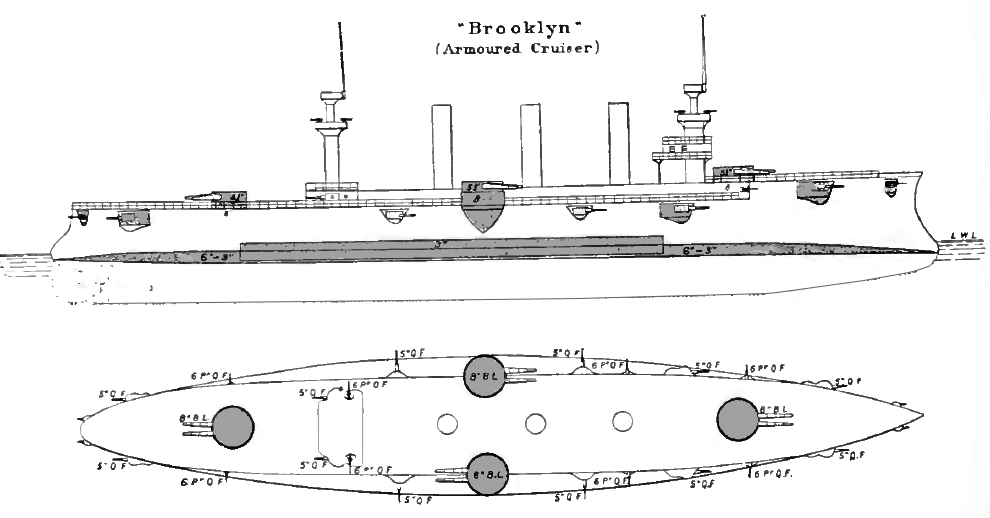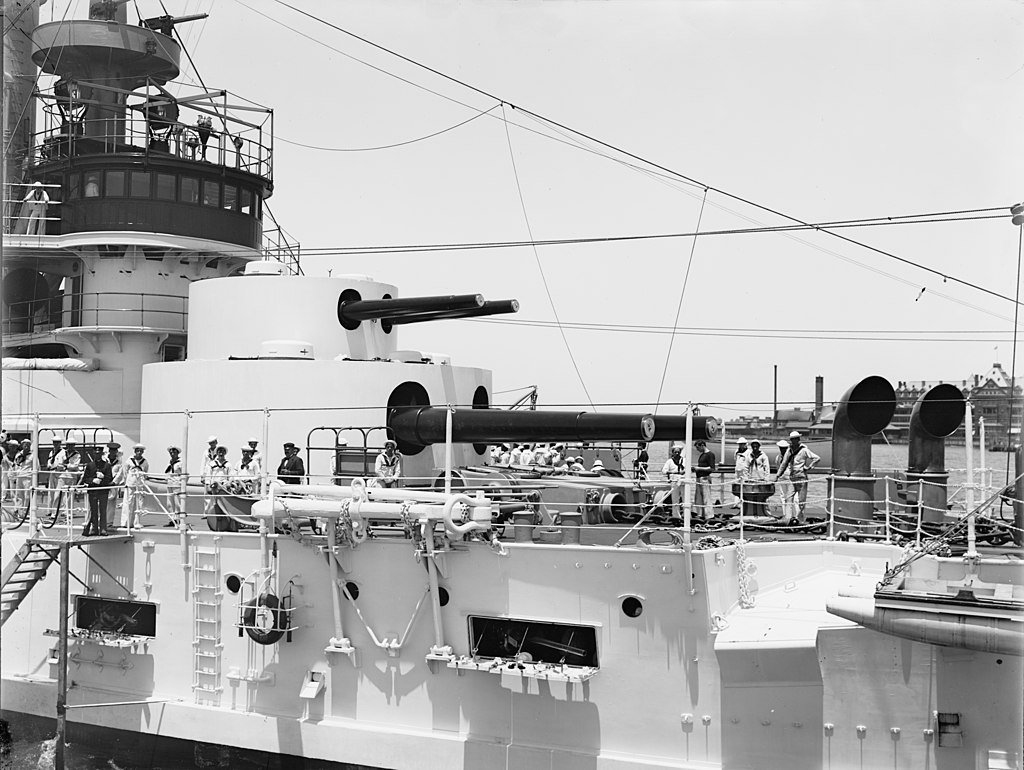Delta Force
Banned
The Brandenburg class was the first oceangoing battleship design of the Imperial German Navy. Interestingly for the era, the Brandenburg class battleships featured three twin turrets in an A-P-Y configuration: one turret fore, one turret center, and one turret aft. This was in contrast to the typical design used by most pre-dreadnought battleships, which featured only two twin turrets in an A-Y configuration, with one turret fore and one turret aft. The A-P-Y configuration didn't become popular at the time due to to the superstructure damage caused when the center turret fired, but the the turret was more awkwardly placed compared to later designs.
While the A-P-Y configuration doesn't inherently cause superstructure damage, it does result in design compromises, taking up space ordinarily used by coal and machinery and requiring more armor to protect the turret and barbette, as well as potentially requiring the armored belt to take up a larger proportion of the ship. Of course, it still results in 50% more main guns relative to an A-Y ship, and with three turrets a ship retains two functioning turrets should one be disabled or destroyed during combat.
Might these advantages be enough to see the A-P-Y configuration adopted as the standard layout for pre-dreadnought battleships? If adopted, what kind of impact might it have on the development of the semi-dreadnought and dreadnought schools of battleship design going into the 1900s?
While the A-P-Y configuration doesn't inherently cause superstructure damage, it does result in design compromises, taking up space ordinarily used by coal and machinery and requiring more armor to protect the turret and barbette, as well as potentially requiring the armored belt to take up a larger proportion of the ship. Of course, it still results in 50% more main guns relative to an A-Y ship, and with three turrets a ship retains two functioning turrets should one be disabled or destroyed during combat.
Might these advantages be enough to see the A-P-Y configuration adopted as the standard layout for pre-dreadnought battleships? If adopted, what kind of impact might it have on the development of the semi-dreadnought and dreadnought schools of battleship design going into the 1900s?
Last edited:



